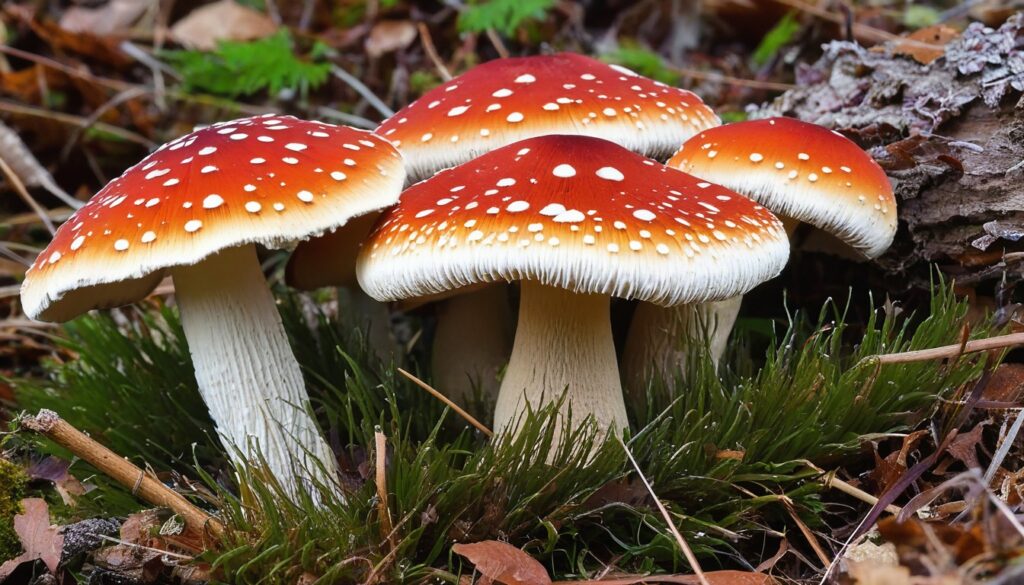Are you an avid outdoors person in Iowa? Do you enjoy hiking, camping, or mushroom foraging? It’s important to be aware of the potential risks posed by poisonous mushrooms in Iowa. Accidentally ingesting a poisonous mushroom can lead to serious health consequences, making it essential to learn how to identify them properly.
Key Takeaways:
- Identification is crucial to avoid consuming poisonous mushrooms in Iowa
- Safe mushroom foraging practices can help prevent accidental ingestion
- Seek medical assistance immediately if you suspect poisoning from a mushroom
- Educating others about the risks of poisonous mushrooms can help promote safe practices
Understanding Mushroom Toxicity
Mushroom toxicity is the umbrella term used to describe the harmful effects caused by the ingestion of poisonous mushrooms. These fungi species contain different types of toxins that can have a detrimental impact on human health if consumed.
In general, the body’s reaction to toxic mushrooms depends on the type and amount of toxins ingested. This section will explore the primary types of toxins found in mushrooms and the potential health risks they pose. It emphasizes the importance of accurate identification to avoid mushroom toxicity, which can be life-threatening in severe cases.
Types of Mushroom Toxins
There are various types of toxins found in mushrooms, some of which include:
- Amanitin: A potent toxin that destroys liver cells, causing liver failure.
- Ibotenic acid and muscimol: These toxins can cause hallucinations, confusion, and muscle spasms.
- Orellanine: A toxin found in the Cortinarius species, which can cause kidney damage and potentially fatal consequences.
- Psilocybin and psilocin: These toxins can cause altered perceptions and hallucinations.
Health Risks of Mushroom Toxicity
The health risks caused by mushroom toxicity can range from mild to severe, and in some cases can even lead to death. Symptoms of mushroom toxicity can typically start within a few hours of ingestion, and it is essential to seek medical attention immediately to prevent further harm.
The symptoms of mushroom toxicity vary based on the type of toxin ingested and usually involve gastrointestinal problems such as nausea, vomiting, and diarrhea. Some toxins can also cause severe damage to specific organs, leading to liver failure, kidney damage, or neurological problems.
“Mushroom toxicity can be life-threatening, and it is not worth the risk to try to self-diagnose. It is essential to seek medical attention immediately in case of accidental ingestion.”
Accurate identification of mushrooms is the key to preventing mushroom toxicity. In the next section, we will discuss common poisonous mushrooms found in Iowa, along with tips for identifying safe edible ones.
Common Poisonous Mushrooms in Iowa
When it comes to identifying poisonous mushrooms in Iowa, it’s essential to know which types to look out for. Here are some of the most common species you may encounter:
Mushroom Name | Toxin Type | Description |
|---|---|---|
Death Cap (Amanita phalloides) | Amanitin | A deadly mushroom with a cap that can be greenish, yellowish or light brown. |
Destroying Angel (Amanita bisporigera) | Amanitin | Is similar to the Death Cap but has a white cap and gills. |
False Morels (Gyromitra spp) | Gyromitrin | contain an unstable toxic compound that can cause vomiting, diarrhea, and in more severe cases, seizures and coma. |
Panther Cap (Amanita pantherina) | Ibotenic Acid and Muscimol | A white mushroom with a brown cap which can cause hallucinations, excessive salivation, and sweating. |
LBM (Little Brown Mushroom) Lookalikes (Conocybe spp, Galerina spp) | Amatoxins, Phallotoxins, and Virotoxins | Typically have small, brown caps with thin stems that can cause liver and kidney failure. |
Remember, it’s crucial to never consume wild mushrooms without the assistance of a trained and experienced identifier or mycologist to avoid potential health risks.
Identifying Safe Edible Mushrooms
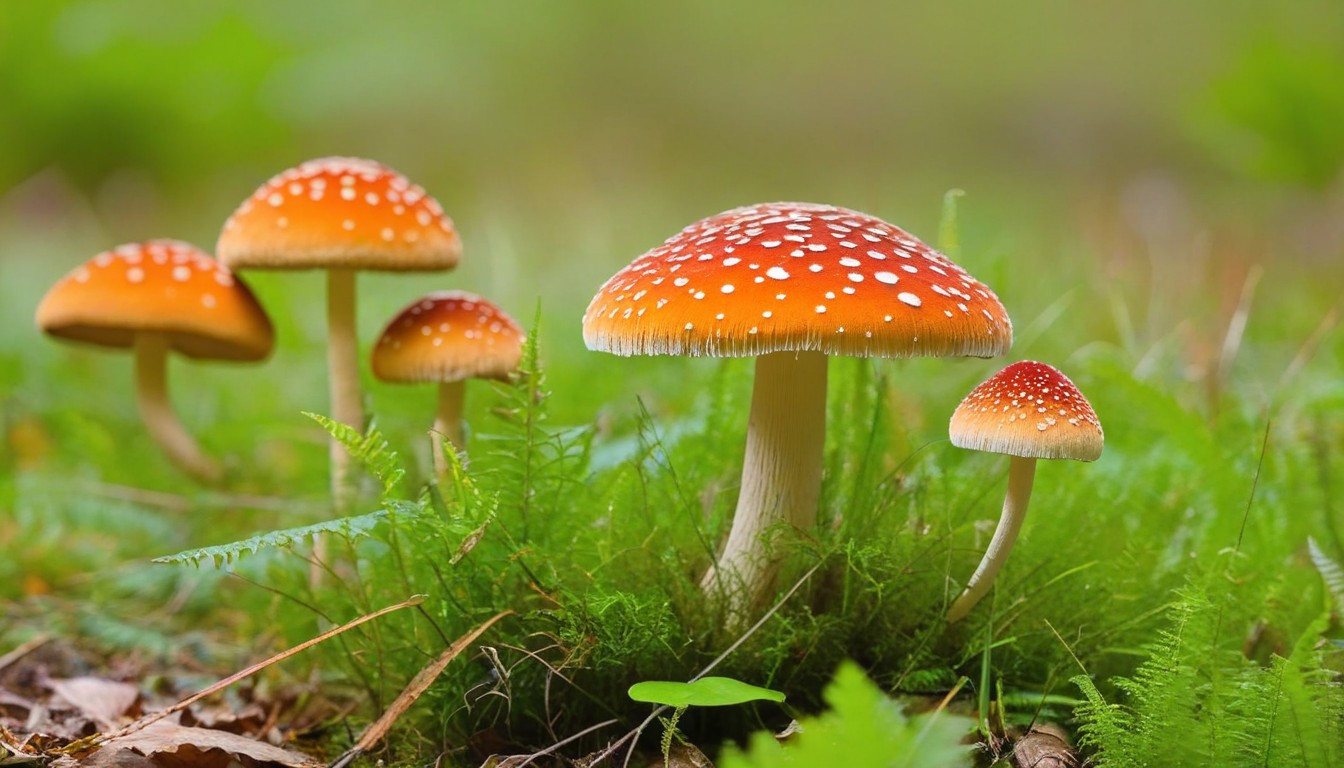
As exciting as it is to identify poisonous mushrooms, it is equally thrilling to be able to spot and safely consume mushrooms that are delicious and nutritious. Although there are many different varieties of safe edible mushrooms in Iowa, a few key features can help differentiate them from their toxic counterparts.
Color and Texture
One of the easiest ways to identify safe edible mushrooms is through their color and texture. Many edible mushrooms have a fleshy, firm texture with a smooth cap and stem. Colors can vary from white to brown, with shades of orange, yellow, and red in some cases. However, note that this is not always a clear indicator and that there may be exceptions.
Gills, Caps, and Stems
Examining the shape, size, and thickness of gills, caps, and stems can also help in distinguishing between safe and poisonous mushrooms. For instance, some safe mushrooms have gills that descend down the stem while others have gills that don’t reach the stem. Caps can be round, funnel-shaped, or flat and attached either centrally or eccentrically to their stems. Stem shapes vary from cylindrical to bulbous, and some even have a root-like structure.
Aroma and Taste
Finally, pay attention to aromas and tastes when identifying edible mushrooms. Edible mushrooms release a pleasant and sometimes earthy fragrance when cooking, slightly different than their taste when raw or cooked. Attempting to identify mushrooms based on an aroma is not always reliable and should not be considered as a sole method of identifying edible mushrooms.
The table below provides some examples of safe edible mushrooms commonly found in Iowa:
Mushroom Name | Description |
|---|---|
Morel | Highly sought after for their nutty, earthy flavor, this mushroom is often found under dead or dying trees and among decaying leaves. |
Chicken of the Woods | A bright orange mushroom with a meaty texture, often found growing on dead or dying trees. |
Oyster Mushroom | Easily identifiable through its gray to white funnel-shaped caps and soft texture, this mushroom is commonly found on hardwood trees. |
Practice caution when identifying and consuming wild mushrooms, even those considered safe and edible. When in doubt, don’t eat it.
Field Guide to Recognizing Poisonous Mushrooms
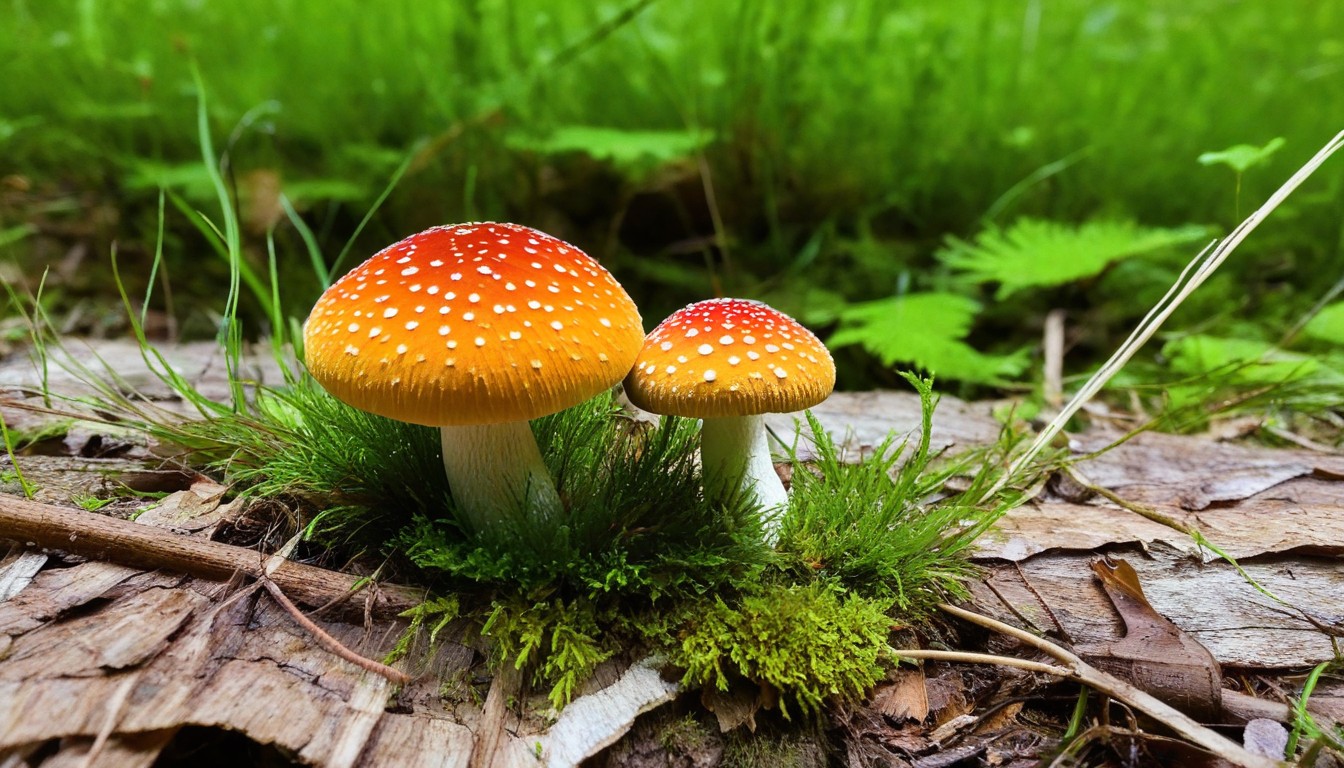
Identifying poisonous mushrooms in Iowa can be tricky, but with this field guide, readers will learn how to recognize some of the most common species found in the region. Here are some common characteristics to consider:
Feature | Safe, Edible Mushrooms | |
|---|---|---|
Color | Bright colors, such as bright red or orange | Earth tones, such as brown, gray, or tan |
Shape | Irregular or asymmetrical shapes | Well-defined, traditional mushroom shapes |
Cap | Viscous or slimy caps | Dry caps |
Gills | Spotted or discolored gills | Creamy white or light yellow gills |
When examining mushrooms, it’s also important to look out for the presence of a ring or veil, the texture of the stem, and the spore print color. Being able to identify these characteristics is essential for preventing accidental ingestion and avoiding the potential health risks associated with poisonous mushrooms.
Remember, if you’re unsure about the identification of a mushroom, it’s always better to err on the side of caution and avoid consuming it. With this field guide, readers can safely and confidently explore the diverse world of mushrooms in Iowa.
Tips for Safe Mushroom Foraging in Iowa
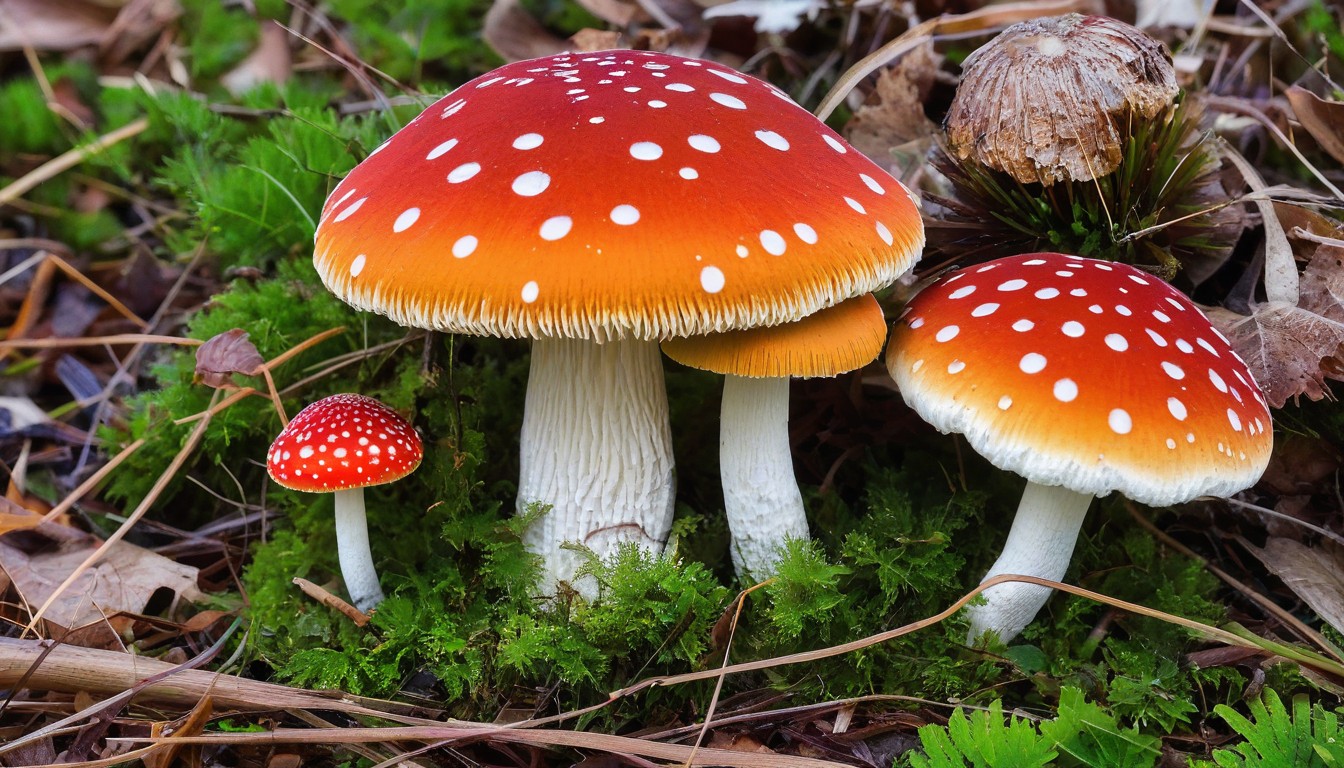
If you’re interested in mushroom foraging in Iowa, taking the necessary precautions is essential for a safe and enjoyable experience. Here are some tips to keep in mind:
1. Proper Handling Techniques
When collecting mushrooms, it’s crucial to handle them correctly to avoid contamination or damage. Always use a sharp tool or scissors to cut the stem and remove the mushroom from the ground. Avoid pulling them out of the soil, as this can disrupt the mushroom’s growth and damage the mycelium below the surface.
2. Suitable Habitats
Not all wild mushrooms grow in the same type of habitat. To find the best foraging spots, research the preferred environments of the mushroom species you’re interested in and look for areas with similar conditions. Woodlands, fields, and wetlands are all potential habitats for different types of mushrooms.
3. Recommended Equipment
Some basic equipment can help make your mushroom foraging experience more efficient and productive. Consider packing a basket or mesh bag to transport your finds, a spray bottle to mist them in case they get too dry, and a pocket knife for cutting the stem.
4. Accurate Identification
Before consuming any wild mushrooms, determine their identification with certainty. Use reputable field guides, online resources, or consult with a mycologist to ensure you’re gathering safe varieties. Never assume a mushroom is edible without proper identification.
5. Safe Consumption
Even after accurately identifying a mushroom species as safe, it’s essential to cook it thoroughly before consuming. Raw mushrooms can contain harmful compounds that are only neutralized by cooking. If you’re unsure of a mushroom’s safety or if you experience any adverse reactions after eating it, seek medical attention immediately.
By following these tips, you can safely forage for mushrooms in Iowa and enjoy the flavors and health benefits of this unique food source.
Potential Health Risks and Treatment
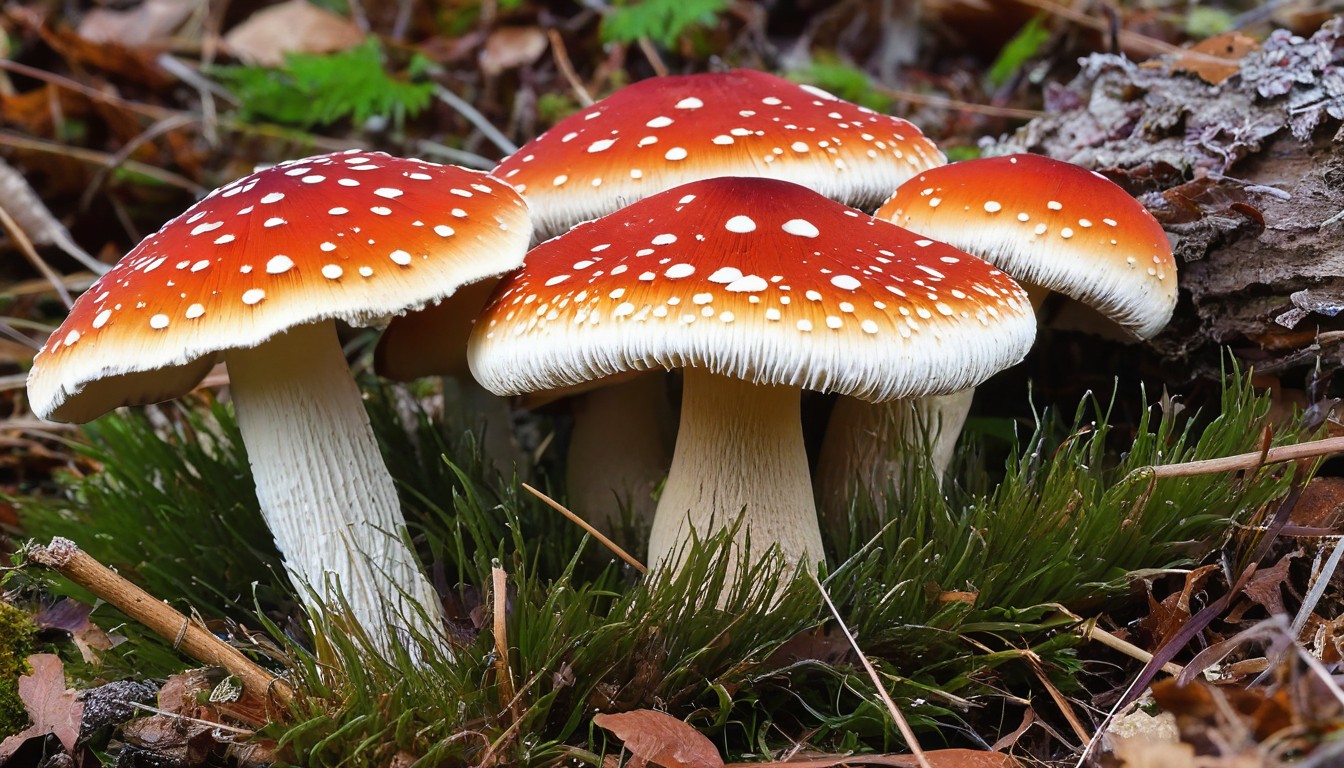
Consuming poisonous mushrooms can be extremely dangerous and may lead to a range of health risks, including nausea, vomiting, diarrhea, hallucinations, liver damage, kidney failure, and even death in severe cases. Symptoms can appear anywhere from 20 minutes to several hours after ingestion. If you or someone you know experiences any of these symptoms, seek medical assistance immediately.
It’s essential to identify the type of mushroom ingested to determine the appropriate medical treatment. Do not attempt to treat the symptoms yourself, as some treatments may worsen the condition. In some cases, physicians may administer activated charcoal or induce vomiting to help flush out toxins. In severe cases, hospitalization and medical management may be necessary.
Overall, prevention is key when it comes to avoiding health risks associated with consuming poisonous mushrooms. Always ensure accurate identification or ask for a professional’s assistance before consuming any mushroom found in the wild. It’s better to be safe than sorry.
Educating Others – Spreading Awareness
It’s crucial to spread awareness about the dangers of poisonous mushrooms to avoid any potential harm. By educating ourselves, we can inform our friends and family about the risks of consuming wild mushrooms. It’s also important to encourage safe practices such as accurate identification and responsible foraging.
One way to spread awareness is by sharing this article or other useful resources that provide information on mushroom identification and safety. We can also participate in workshops or guided foraging tours to learn more about identifying edible mushrooms and avoiding harmful ones.
Another effective way to spread awareness is by volunteering with local organizations that promote safe mushroom foraging practices. You can also organize community events or webinars to share your knowledge with others and address any concerns they may have.
With proper education and awareness, we can ensure that everyone stays safe while enjoying the many benefits of outdoor activities.
Conclusion
Identifying poisonous mushrooms in Iowa is crucial for ensuring the safety of outdoor enthusiasts. By understanding mushroom toxicity and recognizing the common poisonous species in Iowa, individuals can take precautions to avoid accidental ingestion. On the other hand, learning to identify safe, edible mushrooms can add excitement and enrichment to outdoor activities.
Remember to always follow safe mushroom foraging practices, and seek medical attention immediately in case of accidental ingestion. By educating others and spreading awareness about the risks of poisonous mushrooms, we can promote safe and responsible outdoor activities for everyone.
Stay informed and stay safe during your next outdoor adventure in Iowa!
FAQ
How can I identify poisonous mushrooms in Iowa?
Identifying poisonous mushrooms involves learning to recognize their distinct characteristics, such as color, texture, and shape. It is important to consult reliable field guides or seek assistance from experienced mycologists to accurately identify mushrooms in Iowa.
What are the potential health risks of consuming poisonous mushrooms?
Consuming poisonous mushrooms can lead to a range of health risks, including gastrointestinal discomfort, liver and kidney damage, neurological symptoms, and in severe cases, organ failure or death. It is crucial to avoid ingesting any mushroom unless it has been positively identified as safe to eat.
Are there any common poisonous mushrooms found in Iowa that I should be aware of?
Yes, in Iowa, some common poisonous mushrooms include the death cap (Amanita phalloides), the false morel (Gyromitra esculenta), and the destroying angel (Amanita bisporigera). It is important to familiarize yourself with these species and their distinctive traits to avoid accidental ingestion.
How can I differentiate between safe edible mushrooms and poisonous mushrooms in Iowa?
Differentiating between safe edible mushrooms and poisonous mushrooms requires careful observation and knowledge. Pay attention to details such as the color and shape of the cap, the presence of gills or pores, and the type of spore print. It is always recommended to consult experts or attend workshops to improve your identification skills.
What should I consider when foraging for mushrooms in Iowa?
When foraging for mushrooms in Iowa, it is essential to follow these guidelines: only harvest mushrooms that you can positively identify as safe, avoid picking mushrooms next to busy roads or areas with pollution, collect mushrooms at their peak freshness, and respect the natural environment by not over-harvesting.
What should I do if I suspect someone has ingested a poisonous mushroom?
If you suspect someone has ingested a poisonous mushroom, it is crucial to seek immediate medical assistance. Do not induce vomiting unless instructed to do so by a healthcare professional. Take note of the mushroom’s appearance and any symptoms experienced, as this information can help healthcare providers diagnose and treat accordingly.
How can I spread awareness about the risks posed by poisonous mushrooms?
Spreading awareness about the risks of poisonous mushrooms can be done by sharing information through social media platforms, organizing educational workshops or seminars in your community, and distributing informational pamphlets or posters at local nature centers or outdoor events. Encouraging responsible foraging practices and emphasizing the importance of accurate identification are key to promoting safety.

